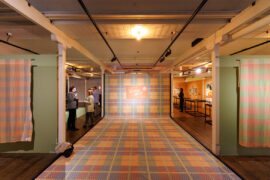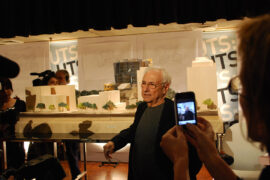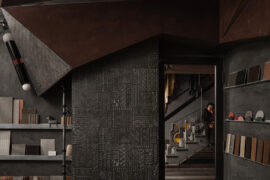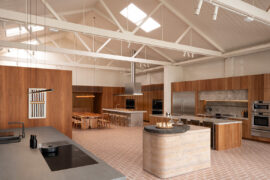The Green Building Council of Australia’s Romilly Madew responds to our latest poll.
June 3rd, 2009
 |
“…if you don’t have an independent system of certification for green buildings and products, how can you ever be certain that a building or a product is truly green?” – Romilly Madew (GBCA)
|
The GBCA offer their point of view on the rating and certification systems in Australia.
“Are green rating tools just a money-making scheme? This month’s indesignlive poll suggests that a section of the marketplace thinks so.
But if you don’t have an independent system of certification for green buildings and products, how can you ever be certain that a building or a product is truly green? Every organisation could claim their building is ‘green, greener, greenest’ using different metrics or unsubstantiated figures.
Before the Green Building Council of Australia launched the Green Star environmental rating system for buildings in 2003, the property industry had no way to define or measure ‘green’ – and as a result, no way to manage risks or ensure that green buildings could make money.
Since then, Green Star has penetrated the property sector to the point where 11 per cent of Australia’s CBD commercial office buildings are now Green Star certified.
Any person involved in a Green Star project will tell you that the certification process is stringent and demanding: the result is a rating that has genuine meaning in the marketplace.
Buildings that have achieved a Green Star rating have independent verification that they adhere to international standards and codes to achieve better environmental outcomes.
What’s more, Green Star enables developers and property owners to access not only the energy and water savings resulting from green buildings, but also the marketing, leasing, productivity and ROI benefits that green buildings consistently deliver.
For instance, the owners of Australia’s first Green Star certified project at 8 Brindabella Circuit in Canberra say they could not put a financial figure on the amount of free publicity they received from their green building, both through their Green Star certification and subsequent environmental awards. In fact, with a waiting list of prospective tenants, the owners needed to rethink their marketing strategy.
In future, we’ll see the rating tools being used to validate reductions in greenhouse gas emissions to earn carbon credits, obtain tax concessions and qualify for density bonuses or other trade-offs – in other words, rating your building can make you money.
So, are green rating tools a money-making scheme? Ask any Green Star rated building’s owner and they’ll say ’you bet’.”
Romilly Madew is Chief Executive of the Green Building Council of Australia.
What do you think? Continue the discussion by leaving your comments below.
INDESIGN is on instagram
Follow @indesignlive
A searchable and comprehensive guide for specifying leading products and their suppliers
Keep up to date with the latest and greatest from our industry BFF's!

Rising above the new Sydney Metro Gadigal Station on Pitt Street, Investa’s Parkline Place is redefining the office property aesthetic.

CDK Stone’s Natasha Stengos takes us through its Alexandria Selection Centre, where stone choice becomes a sensory experience – from curated spaces, crafted details and a colour-organised selection floor.

Hayball, one of Australia’s leading multi-disciplinary design practices, has announced the appointment of David Tordoff as Studio Director of its Sydney office.

Autex Acoustics has championed sustainability for over three decades, and its latest innovation, SpinFix, is an exemplification of circular design and material recyclability, not only reinforcing the company’s innate commitment to prioritising environmental practices, but also developing pioneering environmental solutions from the ground up.
The internet never sleeps! Here's the stuff you might have missed

At the National Wool Museum, a new exhibition traces the evolution of Godfrey Hirst and its long-standing role in shaping Geelong’s industrial and design identity.

We republish an article in memory of the late architect by UTS, whose Dr Chau Chak Wing Building was Gehry’s first built project in Australia. The internationally revered architect passed away on 5th December.

Bangalore studio Multitude of Sins elevates true leftovers — not surplus — into a richly layered workspace where waste materials become narrative, structure and sculptural expression.

The Fisher and Paykel Melbourne Experience Centre by Clare Cousins Architects with Fisher and Paykel Design and Alt Group has been awarded The Retail Space at the INDE.Awards 2025. As a winning project, it redefines the possibilities of retail architecture by creating an immersive, material rich environment shaped by place, culture and craft.